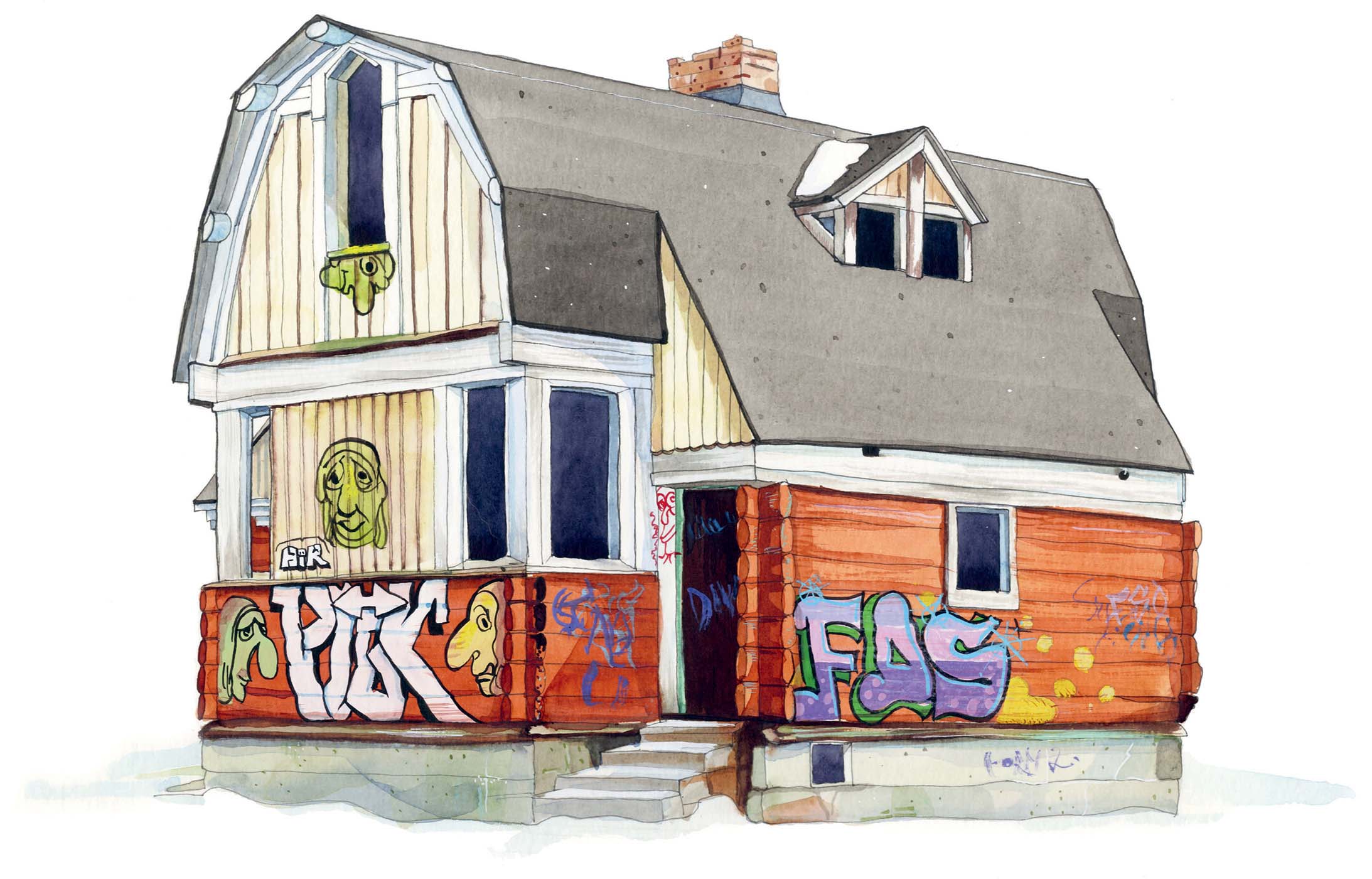
Abandoned villa no. 3. Helsinki.
I had visited friends in Helsinki a few times. My strongest memory was of how grey it was. Tall concrete towers filled with apartments displaying strong influences of modernism and functionalism had created a city that felt quite harsh and lacking in the texture and details that I find so intriguing. It was a city where it seemed that life happened behind the closed doors of the buildings, where the streets were just transit areas. There was a sense that the weather and seasons played a large part in the personality of the city. Winter snow and minimal daylight hours kept people indoors, and long summer days drove them out to the countryside to their summerhouses, to renew beneath canopies of trees and by lakes.
Yet something else was at play here. It was one of those things that you feel but cannot quite explain. The sterile greyness created an unnatural and controlled atmosphere. I just could not find the vibrant back streets that I hunted out in other cities. It was only on researching later that I came across a piece of the city’s history that helped me make sense of this feeling. Between 1998 and 2008, the Helsinki Public Works Department launched a ‘Stop Clutter’ initiative: a zero-tolerance stance on graffiti and street art in the city. Those that broke this new initiative were treated incredibly harshly, and the police and security guards of the city aggressively imposed it. It drove artists underground and out of town. Of course, people still broke those rules, but risking prison and large fines meant that work had to be executed quickly and out of sight.
In 2010, graffiti and street art began to be accepted within designated spaces. A graffiti wall was opened, and became the backdrop to a slowly emerging arts area in the city. Over the following years, a few more legal walls were permitted. Friends would send me photos of the latest work allowed in the city by the likes of Brazilian twins Os Gemeos, and Australian Guido van Helten. Yet there was still something about the control that left it feeling hollow to me, like a city with no flowers growing between cracks in the pavement.
On my last visit, the city had settled at around zero degrees Celsius, and the blanket of snow covering every surface bounced off what little light was coming from the sun, amplifying it. A friend had driven me the forty minutes east of Helsinki to a forest beside a newly developed housing estate. The snow turned muddy and brown where large diggers had churned it up. We walked through the knee-deep snow until we found what we had come for: the abandoned villas. Each building was designed in a different architectural style and scattered around the woodland, surrounded by tall trees that cut out more of the fading sunlight. The story of the village was wrapped in rumour, and nobody I spoke to really knew why it was there and what had happened. The story went that there were plans for a new suburb in the 1970s when all of the houses in this little stretch of woodland were built, but for some reason the redevelopment was abandoned, and therefore so too were the houses. For forty years they sat in the woods by the river, the trees growing up around them, and then through them, each year snowfall and ice putting greater strain on their weakening structures.

Abandoned villa no. 3. Helsinki.
On this visit it was obvious that the degeneration was happening at an accelerated pace both from the environment itself – the blanket of snow being too much weight for the rotten roof timbers to bear any longer – and from arson. Several of the once-grand structures were now just blackened logs and ash on the ground. A camp bed was set up downstairs in one of the buildings that still had a roof. Yet I was saddened to see what looked like asbestos-laced debris scattered around on the floor from the deteriorating structure. It was a reminder of the hidden dangers of old, forgotten structures.
Despite all of this, the whole place was vibrant and rich with colour from the graffiti and murals that covered the remaining walls. The secluded nature of the buildings, worthy of any horror film, had allowed graffiti writers and artists the space to execute their works without being disturbed. In a city as grey as Helsinki, with its long dark winters and grey concrete, this small space in the woods lifted my heart as I explored it. Not just flowers peeking through the cracks, but whole trees.

Abandoned villa no. 5. Helsinki.

Abandoned villa no. 1. Helsinki.

Abandoned villa no. 4. Helsinki.

Abandoned villa no. 2. Helsinki.